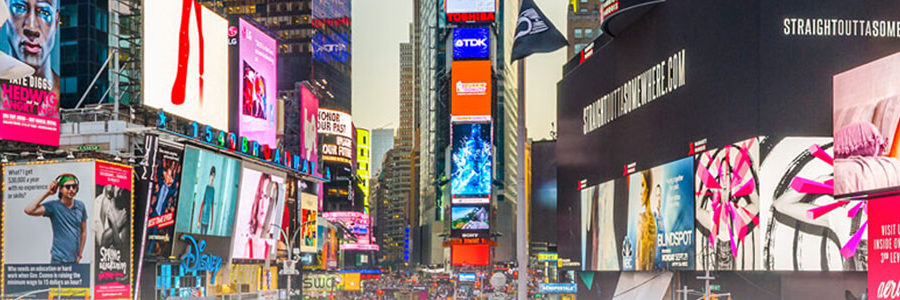The Human Experience: Branding’s Most Untapped Power
AI delivers scale, but empathy turns moments into meaning
Part 2 of our Human Ai Branding Whitepaper Series
The Critical Importance of the Human Experience in Branding
AI can predict, remix, and simulate, but it’s incapable of feeling emotion. The future of branding belongs to those who use AI not to replace human creativity but to amplify it. The question isn’t “Can AI build your brand?” It’s “Can your brand stay human in an AI-powered world?”
The Human Experience Is Holistic
The human experience is the sum of the interactions, emotions, thoughts, and behaviors a person accumulates throughout life. Holistic and multidimensional, it comprises emotional, psychological, physical, social, and spiritual components that collectively shape who we are. These connections are essential to life and, therefore, are critical to all brands—B2B and B2C alike.
Today, more insightful and progressive brands are putting the human experience at the center of their strategies. These brands prioritize understanding and addressing customers’ real needs, emotions, and values. This approach goes beyond promoting products or services. It’s about humanizing the brand and creating genuine connections that resonate personally.
Speaking to the Head, Heart, and Gut
Human beings experience the world through multiple layers of perception and decision-making: the Head (logic and reason), the Heart (emotion and empathy), and the Gut (instinct and intuition). Strong brands understand which of these dimensions to prioritize based on their category, industry, and customers.
- Head (Rational): In B2B technology or financial services, customers need evidence, proof points, and logical value propositions. For example, Salesforce uses data-driven case studies to demonstrate ROI and efficiency gains, appealing to the rational Head.
- Heart (Emotional): Lifestyle, beauty, and entertainment brands thrive on emotional resonance. Dove, for instance, appeals to the Heart by centering real women and authentic beauty in its campaigns—reinforcing inclusivity and self-expression.
- Gut (Instinctual): Some categories—such as fashion, sports, or food—demand immediate instinctive response. Nike’s iconic “Just Do It” tagline bypasses rational arguments to speak directly to the Gut, fueling motivation and a sense of identity. The most successful brands know how to balance these dimensions, often weaving them together. Lucid, for example, appeals to the Head with its technology, the Heart with its vision for a sustainable future, and the Gut with the visceral thrill of performance.
Understanding People’s Emotional Needs

The first step in developing a human-first brand is to deeply understand your audience, including their motivations, desires, and pain points.
One approach is to draw from time-tested psychological and sociological frameworks that have shaped our understanding of human behavior. Maslow’s Hierarchy of Needs, for example, has been influential in psychology, education, sales, and business as a tool to understand motivations and behaviors. As a brand and marketing framework, it helps brands align their offerings and messaging with their customers’ deep-rooted psychological and emotional motivations.
Dove is a strong example. The beauty brand puts women at the center of its marketing strategy, evident in its body positivity and authentic beauty messages. By including real women, not models, in its campaigns, Dove reinforces its values of inclusivity and self-expression.
Genuine Feelings Before Prompts
Psychological frameworks are rooted in real human experiences. Developed through decades of research, they reflect the emotions, relationships, and complexities of life. So, while AI brings flash, speed, and efficiency, it does not share this grounding in lived human experience. It can manipulate content, remix ideas, and accelerate workflows, but it does not feel, empathize, or ideate with intention.
That said, AI can be a powerful amplifier for marketers. It excels at scale, speed, and personalization. When paired with human insight and creativity, AI becomes a force multiplier. A real-world example is our creative directors who use AI to generate dozens of brand mood board variations in minutes. From there, they curate and refine only those that align with the brand’s authentic purpose. AI provides breadth; humans ensure depth and resonance.
Where AI Fits in the Human-First Journey

AI should never replace human creativity, but it can play a valuable role in enabling on-brand experiences at scale. Practical applications include the following:
- Audience Insights: AI can synthesize social listening, search, and behavioral data to uncover emerging values, motivations, and cultural conversations. Strategists can then refine personas and empathy maps with richer inputs.
- Message Testing: AI can rapidly A/B test messaging variants across multiple channels, helping marketers learn what resonates emotionally before committing to large-scale campaigns.
- Content Personalization: AI can adapt tone, format, and sequencing for different audience segments—while human strategists ensure these remain on-brand and purposeful.
- Experience Orchestration: In omnichannel ecosystems, AI can predict where, when, and how people want to engage, creating seamless touchpoints across the brand journey. For example, Spotify’s AI-curated playlists are designed around listening behavior but remain grounded in the company’s human-centric mission of soundtracking people’s lives.
These applications make AI a partner in listening, learning, and delivering—but never in replacing the human spark
The Ethics of AI and Trust in Branding

As AI integrates further into marketing, ethical responsibility becomes essential. Misuse of AI can damage trust—whether through biased outputs, deepfakes, or overly impersonal automation. Brands must set clear guardrails to ensure AI is used responsibly, inclusively, and transparently.
The most trusted brands will be those that use AI to deepen empathy, not shortcut it. For instance, Sephora leverages AI for personalized beauty recommendations, but these tools are framed as supportive aids that enhance, not replace, the expertise of in-store advisors and the authenticity of human interaction.
Toward More Human Experiences
Nobel Prize-winning writer John Steinbeck once wrote: “You can only understand people if you feel them in yourself.” The human experience is about understanding oneself and one’s place in the world, making connections, and striving for higher fulfillment. AI can predict and simulate but cannot participate in the human experience.
To create deeper relationships and greater loyalty between your brand and your customers, you must always view them first and foremost as individuals. That is a power only people can bring to the table.
AI may help us listen, learn, and anticipate better, but it is human empathy, creativity, and judgment that turn insights into meaningful experiences. The future of branding is not human or AI. It is human with AI, working together to create powerful, authentic, and on-brand experiences that speak to the Head, the Heart, and the Gut.
Written By: David Kessler
Starfish is a branding and creative communications agency that ignites powerful customer connections through the discipline of brand experience.
David Kessler
Starfish CEO | Global Marketing Executive | Brand Strategist

















